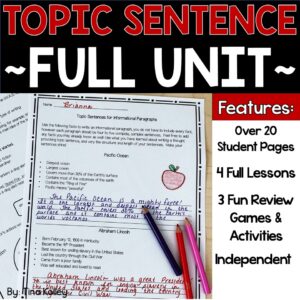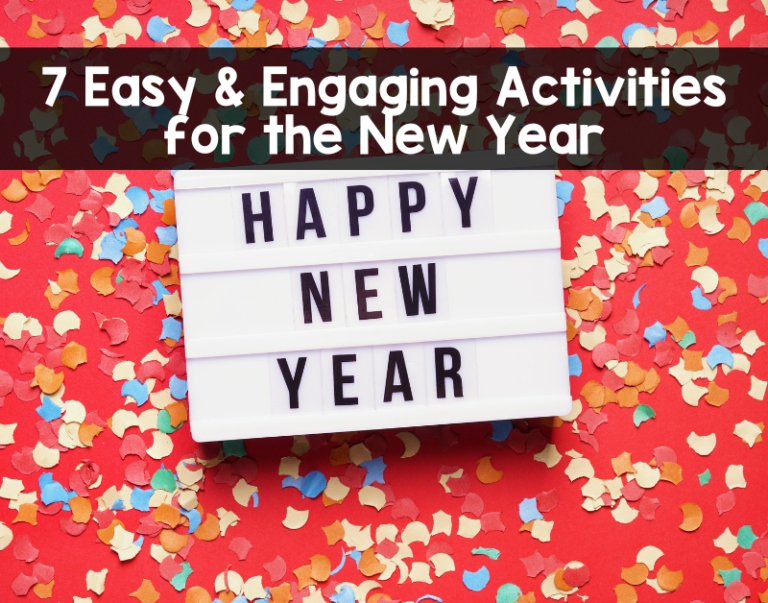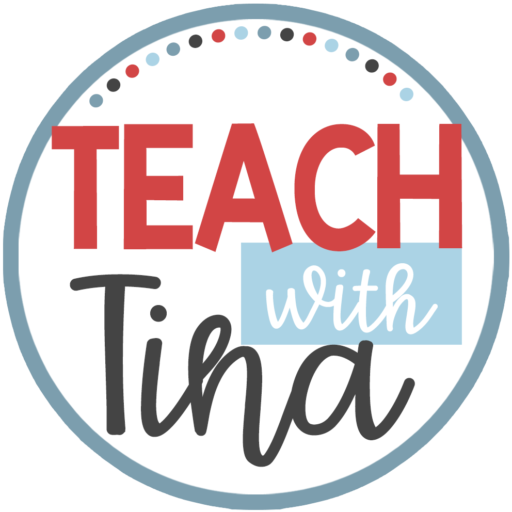Teaching writing is one of those skills a teacher either loves or hates! I was the latter until I learned to break writing down into very small steps. Pretty soon, I was in love with teaching my upper elementary students how to write.
In all honesty, when I teach writing, I pretend that my students have never been taught how to write a paragraph at all! So, before I even dive into teaching my upper elementary students how to write a full paragraph, I kick things off by teaching them how to start a paragraph with a great topic sentence.
Topic Sentences for a Summary
Because most of my students re familiar with writing short summary paragraph, I start by teaching the “recipe” if you will on how to write a succinct topic sentence that gives the reader a glimpse into what they will read about without giving away the details.
The first method I teach is the T.A.G.S. method. T.A.G.S. stands for: Title, Author, Genre, State the main idea or synopsis.
For example, if we are summarizing the book Stone Fox by John Reynolds Gardiner, we would create a topic sentence that may read like this: Stone Fox, by John Reynolds Gardiner, is a realistic fiction novel about a young boy who enters a sled dog race to try to save his family’s farm.
Once we practice and master that skill, I like to add another tool to my students’ writing toolkit. We learn the I.W.A.S. model for writing a topic sentence. I.W.A.S. stands for Identify the title and the genre, Writer, give the writer credit, Action, what is the author doing, explaining, telling, entertaining, etc., State the main idea or synopsis.
For example, In the realistic fiction novel Stone Fox, the author John Reynolds Gardiner entertains us with a story about a young boy who enters a dog sled race to try to save his family farm.
We practice just the topic sentence for mastery.
Topic Sentences for an Informational Paragraph
Writing informational or non-fiction paragraphs are another important writing skill for upper elementary students. Students are expected to take a few facts and turn them into a 5 – 6 sentence paragraph. This is why I now focus on writing an interesting topic sentence for informational paragraphs next.
A topic sentence for an informational paragraph should “hook” the reader without giving away too many details.
To accomplish this goal, I teach my students a few tools to start their paragraphs in an interesting way.
- Use a bold statement.
- Use a quote.
- Ask a question.
- Cluster a few adjectives at the beginning of the sentence.
- Start your sentence with a conjunction.
One of my favorite activities to reinforce this skill is to have my students take dull and lifeless sentences and make them great!
Activities to Reinforce Topic Sentence Mastery
As any teacher will tell you, writing skills, like any other skill, needs to be reinforced. Here are some of my favorite activities for reviewing topic sentences.
One of the easiest activities to do this is a simple sort. I write a few topic sentences on a sheet of paper and give my students a list of six sentences. Their job is to sort which sentence could be included in a paragraph with that topic sentence and which could not be.
To review the components of a topic sentence, I love having my students play “Four Corners.” I prepare a PowerPoint that shows a title, an author, a genre type, or a main idea. Once students identify the category, they silently (I wish) move to the corner. This is a fun and quick way to review.
Task Cards make great “Take to Your Seat” activities for fast finishers or when you are pulling a small group. You can create a sentence sort, topic sentence vs. detail sentence, a TAGS sort, or even have your students put together silly topic sentences from task cares.
If you would like to save time and have an entire mini-unit on hand that explicitly teaches How to Write a Topic sentence, you may what to take a look at my “How to Write a Topic Sentence Unit.” This unit features all of the lessons and activities I have mentioned above in a print-and-go format.





